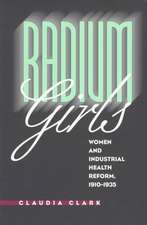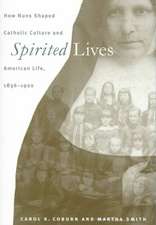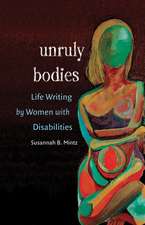Within the Plantation Household: Black and White Women of the Old South: Gender and American Culture
Autor Elizabeth Fox-Genoveseen Limba Engleză Paperback – 30 noi 1988
Din seria Gender and American Culture
-
 Preț: 212.39 lei
Preț: 212.39 lei -
 Preț: 233.15 lei
Preț: 233.15 lei -
 Preț: 218.16 lei
Preț: 218.16 lei -
 Preț: 304.42 lei
Preț: 304.42 lei -
 Preț: 310.02 lei
Preț: 310.02 lei -
 Preț: 307.89 lei
Preț: 307.89 lei -
 Preț: 303.66 lei
Preț: 303.66 lei -
 Preț: 298.04 lei
Preț: 298.04 lei -
 Preț: 234.89 lei
Preț: 234.89 lei -
 Preț: 229.49 lei
Preț: 229.49 lei -
 Preț: 232.97 lei
Preț: 232.97 lei -
 Preț: 272.12 lei
Preț: 272.12 lei -
 Preț: 265.21 lei
Preț: 265.21 lei -
 Preț: 228.34 lei
Preț: 228.34 lei -
 Preț: 322.33 lei
Preț: 322.33 lei -
 Preț: 346.27 lei
Preț: 346.27 lei -
 Preț: 334.73 lei
Preț: 334.73 lei -
 Preț: 303.05 lei
Preț: 303.05 lei -
 Preț: 305.00 lei
Preț: 305.00 lei -
 Preț: 303.27 lei
Preț: 303.27 lei -
 Preț: 307.68 lei
Preț: 307.68 lei - 5%
 Preț: 257.64 lei
Preț: 257.64 lei -
 Preț: 304.42 lei
Preț: 304.42 lei -
 Preț: 259.81 lei
Preț: 259.81 lei -
 Preț: 314.04 lei
Preț: 314.04 lei -
 Preț: 309.80 lei
Preț: 309.80 lei -
 Preț: 232.34 lei
Preț: 232.34 lei -
 Preț: 267.33 lei
Preț: 267.33 lei -
 Preț: 274.07 lei
Preț: 274.07 lei -
 Preț: 259.81 lei
Preț: 259.81 lei -
 Preț: 305.57 lei
Preț: 305.57 lei -
 Preț: 312.52 lei
Preț: 312.52 lei -
 Preț: 311.33 lei
Preț: 311.33 lei -
 Preț: 461.45 lei
Preț: 461.45 lei -
 Preț: 363.26 lei
Preț: 363.26 lei -
 Preț: 266.74 lei
Preț: 266.74 lei -
 Preț: 234.71 lei
Preț: 234.71 lei -
 Preț: 333.59 lei
Preț: 333.59 lei -
 Preț: 244.40 lei
Preț: 244.40 lei -
 Preț: 231.24 lei
Preț: 231.24 lei -
 Preț: 303.05 lei
Preț: 303.05 lei - 23%
 Preț: 562.19 lei
Preț: 562.19 lei -
 Preț: 216.22 lei
Preț: 216.22 lei -
 Preț: 220.45 lei
Preț: 220.45 lei -

Preț: 280.80 lei
Nou
Puncte Express: 421
Preț estimativ în valută:
53.74€ • 55.90$ • 44.36£
53.74€ • 55.90$ • 44.36£
Carte tipărită la comandă
Livrare economică 14-28 aprilie
Preluare comenzi: 021 569.72.76
Specificații
ISBN-13: 9780807842324
ISBN-10: 080784232X
Pagini: 544
Dimensiuni: 152 x 235 x 38 mm
Greutate: 0.84 kg
Editura: University of North Carolina Press
Seriile Gender and American Culture, Gender and American Culture (Paperback)
Locul publicării:United States
ISBN-10: 080784232X
Pagini: 544
Dimensiuni: 152 x 235 x 38 mm
Greutate: 0.84 kg
Editura: University of North Carolina Press
Seriile Gender and American Culture, Gender and American Culture (Paperback)
Locul publicării:United States
Textul de pe ultima copertă
This important book challenges many current notions about antebellum southern women, white and black. Bound in a web of intimacy fraught with violence, the lives of slave women were intertwined, but they were never linked in sisterhood. Although mistresses and slaves shared a common household, they were radically different from each other, and Within the Plantation Household documents the difficult class relations between slaveholding and slave women.
Recenzii
"Elizabeth Fox-Genovese . . . . succeeds brilliantly.Mechal Sobel, "New York Times Book Review""
"Virtually every sentence stimulates and every page challenges. . . . A vivid, extensive chonicle of Southern women's daily existence ."Publisher's Weekly""
"An ambitious book . . . . Elizabeth Fox-Genovese elevates American women's history to a new level of sophistication.Nell Irvin Painter, Princeton University"
ÝA¨ well-written and thoroughly researched social history."New Yorker"
"Asks us to put aside simple generalizations and explore the complicated world that masters and slaves built together on their terms, not ours. . . . Fox-Genovese provides a rich analysis . . . without losing her critical eye or her amazing capacity for empathy. Like no other historian before or since."
-- "Civil War Times"
"Virtually every sentence stimulates and every page challenges. . . . A vivid, extensive chonicle of Southern women's daily existence ."Publisher's Weekly""
"An ambitious book . . . . Elizabeth Fox-Genovese elevates American women's history to a new level of sophistication.Nell Irvin Painter, Princeton University"
ÝA¨ well-written and thoroughly researched social history."New Yorker"
"Asks us to put aside simple generalizations and explore the complicated world that masters and slaves built together on their terms, not ours. . . . Fox-Genovese provides a rich analysis . . . without losing her critical eye or her amazing capacity for empathy. Like no other historian before or since."
-- "Civil War Times"
Descriere
Documenting the difficult class relations between women slaveholders and slave women, this study shows how class and race as well as gender shaped women's experiences and determined their identities. Drawing upon massive research in diaries, letters, memoirs, and oral histories, the author argues that the lives of antebellum southern women, enslaved and free, differed fundamentally from those of northern women and that it is not possible to understand antebellum southern women by applying models derived from New England sources.























